Shining A Light On Phosphorescent Comics
Posted: Tuesday, March 18, 2003
By: Darren Schroeder
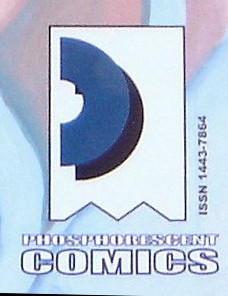
One of the best places to meet with comic creating people is a convention. You get to see what they have for sale, swap horror stories about the trip there, and snigger at all the people wearing silly costumes. At the last New Zealand Armageddon Pulp Culture Convention in Wellington one of the people I chatted with was Ben Howard, Publisher & Editor of Phosphorescent Comics: an Australian comic publisher that is making a good stab at the larger world comics market. He had some interesting things to say about the convention and the comics business on both sides of the Tasman Sea. We decided to continue the conversation via the internet...
Darren Schroeder: In November you toured New Zealand to promote Phosphorescent Comics. What makes such a trip worth your time and money?
Ben Howard: The expo's you have in New Zealand are a valuable opportunity for us to bring our comic book products to Kiwi shores in person. Travelling around the country and meeting so many people it's easy to think back on the trip as a bit of a holiday, so on that level it was worth every bit of effort. But having a line of comics to promote gives us a certain reason to get interested in more than just the landmarks and other sightseeing. We were there to sell and promote Phosphorescent Comics, and to have a little peek at New Zealand's comic stores. And we succeeded! As I type these answers to your question my brain's still downloading all the information. We had a blast at the Wellington Expo in November. We managed to distribute several hundred copies of our comic book titles into the hands of an exciting new audience; we met a lot of people, and toured around visiting all New Zealand's North Island comic stores. Hopefully the benefits won't be fleeting. We can now put a face to the name of people who actually sell our products and we got a chance to talk directly to a bunch of brand new readers!
DS: Who makes up the Phosphorescent Team?
BH: We really place the emphasis on each title's separate production team. A production team is responsible for the creative side of a specific release or series, including the story, illustration, inking, colouring, publishing, editing, and miscellaneous things. For example on our upcoming series Witch King we have Christian Read (writer), Paul Abstruse (illustrator), Laing Rahner (colourist/effects), PJ Magalhaes (inker) and myself (as publisher/editor) -- all responsible for coming up with the contents of the book successfully, within deadline, as a team. A similar situation exists with our other titles. Right now we're running just two creative teams. Several people are often involved in more than one title but all the creative teams working on Phosphorescent Comics releases combine to form the greater Phosphorescent Comics Team. I have to admit we don't get together for many birthdays or barbecues. The main focus has been on production and process development. The business is still evolving and the teams are still in early stages -- some spread over long distances throughout Australia, relying mainly on email and the post. About the only time we ever all get together in one place is in the convention season.
But aside from the amazing creative talent there's the business end of things. While we often involve creators in promotional events, interviews, etc, it's primarily just myself and my wife Karen running the non-creative, i.e. sales, distribution, accounting, marketing and manufacturing (the business) end of things.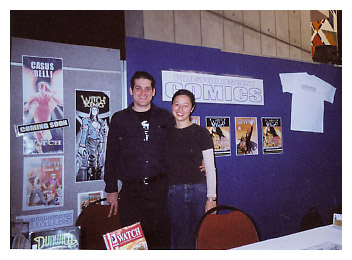 DS: Have you or your wife had any training or experience in the business side of things before?
DS: Have you or your wife had any training or experience in the business side of things before?
BH: Yes and no. We've each had lifetimes of business advice and experience handed down to us, and had ample business training through education and work; I've studied writing, management and law at tertiary level and Karen has a communication degree in modern languages and studied accounting as well, but absolutely nothing could have prepared us for the comics publishing business except the actual comics business itself. While there is a lot that we do share in common with other companies working in different realms, most of the detail on a day to day basis is very particular to running a comics company, and a comics company only. So far we've been running Phosphorescent Comics for 4 years. Ask the same question in another 5 and I anticipate telling you then that we've had 9 years experience running the business side of things!
DS: Is New Zealand a big market for your comics?
BH: New Zealand has a large comic reading audience and we acknowledge New Zealand as a vital part of the bigger picture. Although the US, the UK, Canada, and Australia are bigger markets in terms of outright comic readers, New Zealand is still pretty big! We've put a lot of work into gaining ground in New Zealand, as I believe it has an audience that is vital to our future and the future development of comics. So far we've been pleasantly surprised with the response from New Zealand. We've sold quite a few books there considering our few visits. Phosphorescent Comics will aim to keep producing work that captures the imaginations of New Zealand's comic readers. Our focus is on the future and we would be honoured if we were able to carry on developing the relationship we have begun by continuing to build our market in New Zealand. It's still early days hopefully!
DS: Roughly what sort of numbers would you sell in NZ are we talking a couple of hundred readers or in the thousands?
BH: There was a time, of course, when we'd only sold one comic in New Zealand. That one was followed by two, then ten, followed by hundreds. We were apparently in the right place at the right time and were pleasantly surprised by selling hundreds more again at the latest Armageddon Pulp Culture Expo in Wellington. It's all adding up. The numbers of comics sold in NZ just makes it into the thousands, but with each new release we've seen a steady increase and that can only mean an increase in interest which means future sales. We have been pleasantly surprised by Kiwi responses to our most recent releases; the numbers sold and the straight forward, intelligent feedback we've received from New Zealand shores. All this has been a driving incentive to make New Zealand one of our key areas of focus in the coming years. If our creators keep working as hard as they have I see no reason why sales can't even turn into the thousands for each new release. We're particularly anticipating great things from the upcoming series of 'The Watch' and with the international release of 'Witch King'. I'm constantly encouraged by the standard of the upcoming work our creative teams will have on offer. Truth is we're expecting big things from New Zealander's in the coming years.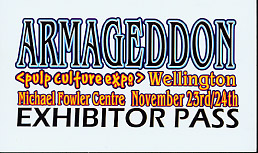 DS: When we meet at Armageddon, you seemed pretty busy talking to the fans about your comics. What sort of feed back did you get?
DS: When we meet at Armageddon, you seemed pretty busy talking to the fans about your comics. What sort of feed back did you get?
BH: We were happy to find many return customers already familiar with our titles. This was the best thing. For a publisher who spends a LOT of time explaining each concept from the beginning it is VERY rewarding to talk with a reader who knows the creative team and the stories. From the masses to whom we did have to explain the basic story lines and concepts we found out a lot about New Zealander's general interests and involvement in comics -- where they get them, what they're interested in, etc, etc. Although we couldn't do without the feedback we receive by post and email it's much more direct and enlightening to keep on top of opinion if you regularly exchange ideas with people in person.
DS: How do you respond to the person who wants you to look at their portfolio?
BH: How we respond to this question can all depend on how the person goes about asking and what they have brought with them. I'd be pretty reluctant to thumb through a messy stack of unbound half-finished pages. There's a definite correlation between portfolio presentation and the owner's dedication to their craft and skill. We want to see a person's best work. Also the truth is that while we're interested in art of almost all types we are mostly accustomed to the review of comic book writing and sequential artwork for comics. That's when the person is most likely to find our thoughts more relevant, because our experience is with that style of work. When any work is presented well, we get more enthusiastic but we don't always have the 5-40 minutes required to give a decent appraisal. A portfolio review isn't always possible at conventions on the spur of the moment, although we welcome them at the right opportunity. It can make it easier if the person comes prepared and sets a time with us early on a day for us to review their portfolio in the afternoon. If it's a busy day then sometimes it's best if they have samples that they can leave with us, for us to contact them if we have any suggestions, questions or comments.
DS: When we chatted at the convention you talked about how you were telling people you only wanted to see submissions of the absolute best work the artist could do. Has this put many people off?
BH: Yes. That's the idea. The main purpose of our submissions process is to find the right creative talents suited to working in this difficult industry on our brand of books. What's the point in inviting second rate work? For unknown creators who may not have had any prior experience we're taking a big leap of faith in them and their ability. In consideration of all other factors they must be people who are clearly serious about their trade and they must be able to function as part of a team, meeting deadlines, willing to rework things. Send a submission to Phosphorescent Comics today was our catch cry for submissions in the early days but we've quickly come to realise that we only have time to consider people's absolute best. If that puts people off then so be it. Eventually if it leads to lifting their quality then that's a good thing.
DS: What are the essentials to pack on a comic tour?
BH: There's the obvious like a realistic quantity of comics and posters, and promotional gear, etc, but there would be no point even trying if you didn't bring an open mind and a positive attitude. The willingness to talk openly and listen to feedback about your work is extremely important. You've only got one chance to get the listener interested, so there isn't room for hesitation! Especially when exhibiting titles at conventions. Conventions are the best opportunity you'll have to hear honest, sometimes critical, but honest opinions on artwork and stories. So no matter what, you really need to come armed with a readiness to talk and listen.
DS: Did the convention meet your expectations?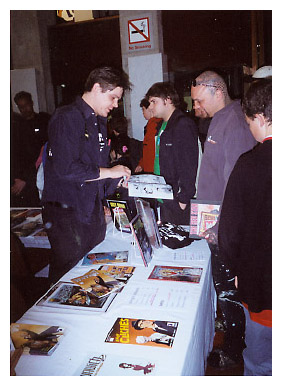 BH: The November 2002 Armageddon Pulp Culture Expo in Wellington was the third show in New Zealand we've been to -- but it was our first time in Wellington! We weren't so sure what to expect but from the moment we arrived all we saw was coverage for the show -- on the TV, on the radio, the sidewalks and newspaper. All this hype was actually lived up to at the event!!! I think every one of the thousands that attended had a fantastic time and enjoyed a great venue (Michael Fowler Centre). It rose above our expectations. We sold a lot of books. There was a very diverse array of comics, cards, toys, games and pop culture at the show. When it's on next time we'd suggest everyone go.
BH: The November 2002 Armageddon Pulp Culture Expo in Wellington was the third show in New Zealand we've been to -- but it was our first time in Wellington! We weren't so sure what to expect but from the moment we arrived all we saw was coverage for the show -- on the TV, on the radio, the sidewalks and newspaper. All this hype was actually lived up to at the event!!! I think every one of the thousands that attended had a fantastic time and enjoyed a great venue (Michael Fowler Centre). It rose above our expectations. We sold a lot of books. There was a very diverse array of comics, cards, toys, games and pop culture at the show. When it's on next time we'd suggest everyone go.
DS: What's the state of the comics scene in Australia?
BH: Australia is home to a large contingent of emerging young illustrators and writers who have an interest in working with comics, and is also home to some big-name industry vets. Australia has a strong (and growing) comics scene, although there remains no true comic industry for Australia per se. Due to the prominence of overseas markets, Australia's comic scene is inextricably woven (and now more and more so with the internet) into the fabric of the international comics industry. While Australia isn't an epicentre for comics, it does have a strong and vibrant, happening comics scene. Even the most internationally acclaimed Australian comic book veterans regularly take part in local conferences and conventions, discussion and Australian comic anthologies.
Australia is home to several annual conventions (Comicfest! & Supanova are the biggest), which remain THE opportunity for Australian publishers to introduce their work to the Australian public directly. And for the first time in recent years (possibly ever?), Brisbane, rather than Melbourne or Sydney, will be host to the leading convention this year. It's got to be a good sign to see the Australian conventions travelling to different cities, spreading the word. Public interest in the local scene is growing; there are sub scenes in every major city (which hold regular meetings), there are a number of locally published comics being regularly released (covering a broad range of colloquial Australian and other more international genres), and there are a number of new initiatives being established by local comic minded individuals with a view to support the local scene (you can check those out on the web at comicsaustralia.com and ozcomics.com). But there's still plenty of room for new ventures. We're probably not back to the standards experienced in the comics booms of the 80's-90's yet, but for the last 5 years the Australian conventions and the quality of the Australian-made releases have all been improving to a large degree. More and more Australian artists and writers seem to be getting new projects together, and the standard is improving with each new release.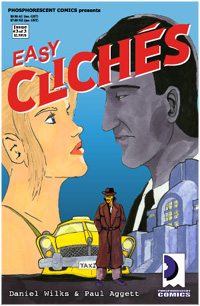 So there are a lot of great, imaginative people working in comics right now in Australia. We saw a similar thing in New Zealand. Everyone seems to know each other fairly well in terms of how they fit into the bigger picture. Currently there's a LOT of cross-pollination of ideas and the scene is a lot more organised and connected than it might have been previously. In Australia, and probably anywhere else, it still takes a lot of hard work to even have a hope at make a living from comics. The bulk of the comic reading audience is overseas, and thus also the ambitions of most local creators. Although it's not everybody's passion to follow, it's not so unusual to find up-and-coming Australian artists and writers names appearing in the credits of fairly big-name international titles from the US and Europe. The fact that Australian creators are able to find this work regularly boosts the local scene because it shows at least one path to finding success within this often difficult industry.
So there are a lot of great, imaginative people working in comics right now in Australia. We saw a similar thing in New Zealand. Everyone seems to know each other fairly well in terms of how they fit into the bigger picture. Currently there's a LOT of cross-pollination of ideas and the scene is a lot more organised and connected than it might have been previously. In Australia, and probably anywhere else, it still takes a lot of hard work to even have a hope at make a living from comics. The bulk of the comic reading audience is overseas, and thus also the ambitions of most local creators. Although it's not everybody's passion to follow, it's not so unusual to find up-and-coming Australian artists and writers names appearing in the credits of fairly big-name international titles from the US and Europe. The fact that Australian creators are able to find this work regularly boosts the local scene because it shows at least one path to finding success within this often difficult industry.
I think we're into an exciting time indeed! Something seems to have inspired a resurgence of public or business interest in recent years. Comics (as trade-paperbacks) are being sold in more and more bookstores and mainstream media coverage of comics has recently seen a steady increase (now very often seen alongside reviews of computer games and other entertainment). It's not another golden age yet but this means comics could be moving into a new era of acceptance by the wider community in Australia. In turn this may see increased prosperity come to the local craftsmen. I hope so. You've asked a deep question. So many factors are involved that it's hard to take an angle on this that will encompass the state of the Australian scene as it is for everybody, but I hope you've got an insight into some aspects of it at least. The best way to find out what state the Australian comics scene is in, is to come to an Australian convention and see!
DS: Okay, I've got my hands on the SBC cheque book (Don't tell the boss) but can only write one cheque so can't go to all of the Australian comic conventions. Which one should I pick and why?
BH: Definitely Comicfest! (and yes that exclamation mark is part of the name). Because it's become the only large, exclusively comics focused convention in Australia and truly is the best opportunity for Australian comics fans, creators and international comic guests to come together under one roof for a whole action-packed weekend. Comicfest! started in March of 2000, and against all odds the convention organisers have really stuck with it. Consequently the event is becoming more refined and increasingly focused. One of the most interesting things about Comicfest! is that it has moved venues regularly, meaning that attendance figures are never certain until the event, but it has also taken comics to an increasingly broad cross-section of different Australian communities. In the long run I think all this venue-changing will pay off. For the first time ever, Comicfest! is planned for Brisbane this September. It's a bold and exiting move to be taking the event to a brand new capital. There's a real feeling that this latest announcement could mean big things for the future of the event: it's easy for a comics show to get lost in the plethora of Sydney happenings but in Brisbane comics have a real chance to take over (Brisbane is roughly the size of Auckland). Come over if you can! A Trans-Tasman flight is relatively affordable these days compared with flying to the States, and although the New Zealand events have a lot on offer, Comicfest! will give you the best insight into the Australian comic scene. You'll have a chance to walk down Artist's Alley, and meet with Australia's best writers and artists. If you're so inclined you'll find tons of people willing to look at your portfolio. If you've been thinking of attending international shows, consider Comicfest! as a stepping-stone to the international comics world. Cross-pollination of ideas is important between New Zealand and Australia and you'll find that you gain a wealth of enlightening experiences to take home. There are a few other conventions, big and small, but Comicfest! is probably the one to go to.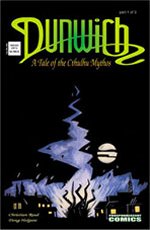 DS: What was your impression of the comic stores you saw? Any differences to the shops back in Australia?
DS: What was your impression of the comic stores you saw? Any differences to the shops back in Australia?
BH: As far as the products go and the way that these businesses operate in comics, there's not that much difference to be found when comparing the New Zealand comic shops to those found elsewhere in the English speaking world - apart from finding a Kiwi behind the counter of course! But it's true; the stores in New Zealand would easily fit in if they were suddenly picked up by a freak storm and dropped intact into the suburbs or CBD of LA, Washington DC, London, or New York. They share the same major distributor, attract a similar brand of young and (usually) intelligent customer, and carry a very similar range of graphic novels, toys and comic books. In Australia the same holds true. We can't escape the fact that it's an international industry; one that relies on international similarities at the point of sale for books to be produced and sold, read and talked about on an international level.
Our initial impressions have thankfully already had time to turn into some good relationships with some of the best comic stores in New Zealand. Our first big opportunity to discuss things in some depth was with the managers and owners of Auckland's Gotham Comics, King of Cards, and Heroes 4 Sale during our previous NZ expedition for the 2001 Armageddon Expo. Tony Gibson, owner and founder of Gotham had been especially full of help and was obviously passionate about his work. As we got to know him we could see that Tony ran his shop with a seemingly perfect blend of true creative passion along with a steady head for business. Tony passed away later in 2001, something that came all too prematurely. He was a young man with great dreams and as a result Gotham Comics continues to be the most popular and in-tune suburban comic shop I have ever had the pleasure of being in. In my mind, Gotham Comics stands as a true comic shop in every positive sense, and our experience with Gotham set the tone for our latest visit New Zealand.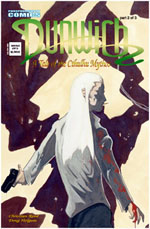 New Zealand has many stores for its geographical size in comparison with Australia, and we found there to be at least one comic shop within earshot of every mid-size population centre. Travelling from shop to shop; Wellington, to Palmerston North, to Hastings, to Hamilton, then Auckland, it struck me that Australia generally isn't so lucky to have so many comic shops out in the regional locations. They're well stocked and know about their products, and this in itself is a very positive indicator for comics in New Zealand. Yet while comics are a central part of business for these regional stores, they have inevitably had to couple their comic stock alongside other products a bit; some carry games, some are into music. It makes sense. These supporting products are logical for a comic store in a town with less than enough residents to support a shop just for the sake of the local comic readers.
New Zealand has many stores for its geographical size in comparison with Australia, and we found there to be at least one comic shop within earshot of every mid-size population centre. Travelling from shop to shop; Wellington, to Palmerston North, to Hastings, to Hamilton, then Auckland, it struck me that Australia generally isn't so lucky to have so many comic shops out in the regional locations. They're well stocked and know about their products, and this in itself is a very positive indicator for comics in New Zealand. Yet while comics are a central part of business for these regional stores, they have inevitably had to couple their comic stock alongside other products a bit; some carry games, some are into music. It makes sense. These supporting products are logical for a comic store in a town with less than enough residents to support a shop just for the sake of the local comic readers.
But exactly what other line of business they diversify into was something I see as the key to the success of comic shops in regional areas. The more successful the side-products are for them, the more comic outlets there will logically be. Alongside the music, books, clothing and games, there seemed, at first to my astonishment, and then bewilderment, a rather inexplicably high number of golden pyramids, wooden sphinxes and other 'Souvenirs from Planet Earth' for sale in the regional NZ comic outlets. I had to ask myself: Was this really the best side-product to be carrying? Australia just doesn't have comic outlets in so many regional areas, and so maybe the 'souvenir syndrome' is really part and parcel with the fact that these NZ stores are real survivors where Australia has failed to keep their regional stores open. While having comic stores in these regional locations completely outweighs any hypothetical negatives, I almost considered going to war with these obscure golden pyramids and other strange artefacts, but decided I would rather just challenge them to continually rethink the side-product issue.
The comic shops in NZ cater for a wide range of different interests. It was evident that the New Zealand retailers are very dedicated to their shops and customers and to making sure that they generally provide very highly polished and well organised comic shop services. It was great to see how in general the retailers are very supportive of the local New Zealand creators, balancing the effect of such a large amount of foreign culture. In keeping with the status-quo we experienced last time we had been to New Zealand, Dylan Horrock's Hicksville and Ant Sang's Dharma Punks were big sellers for many of them alongside Batman, Spiderman and other big titles that were to be expected. The impression we have is that the retail scene in New Zealand is alive and well, and we've been honoured by their commitment to take our books on board.
DS: How supportive is the wider Australian comic community of your attempts to operate in the international comics market and of things like listings in Previews?
BH: We wouldn't even be able to attempt to operate on an international level if it wasn't for the local support we've received. We started off thinking globally but acting local. Everyone, from the local creators, retailers, and industry veterans has been extremely co-operative and we've made a lot of great friends in the Australian comic community. There's some great talent to be found in Australia too. As much as we're aiming for the international scene, we will always rely on support from the local industry. Originally we didn't have much of a perception of how important the local market would be, but it's given us vital experience in almost everything. From attending the local comic shows to dealing with retail, we owe our thanks to the local scene. We recently even won an award for our efforts in taking Australian creators to the international industry.
DS: What made you decide that comics was the area you wanted to work in?
BH: I started Phosphorescent Media in 1998 for the purpose of establishing a publishing and multimedia company. Our sights have always been set heavily on producing our own projects, but to start with the objectives were to produce magazines and websites (we didn't even think about comics). It wasn't until I had spent about a year of days and nights working in my bedroom/office on an electronic music magazine that comics ever came into the equation. Putting together a magazine is a big first project, and although it's still heavily on the business agenda it's been side tracked to make way for the comics. Christian Read, a role-playing buddy who had been writing some of the initial software reviews for the magazine came to me one day with a series of comic scripts with an underlying suggestion: a magazine is a hell of a job, so why not try something essentially the same but smaller? And it's true: where a magazine requires the co-ordination of around twenty freelance staff and a monthly 128 page full colour publishing schedule (and CD-Rom on the cover in the case of our magazine), a comic would initially require only three or four people, with a quarterly 24 page black & white publishing schedule. And so I went for it. In March of 2000 our inaugural publications Dunwich: a Tale of the Cthulhu Mythos and The Watch were born under the banner of our subsidiary Phosphorescent Comics. Working in comics has allowed us to survive the kind of mistakes and learning curves that we wouldn't have been able to survive under the original business model, and I'm glad to speculate that we're much closer to achieving the original goals in publishing than ever before. I have also had the opportunity to rekindle my passion for creative storytelling and working with artistic people, and it's really only recently that I've convinced myself, that no matter what else we do, comics will always be a field that we will want to work in as well.
DS: What struck you as the strangest thing about New Zealand culture during your visit?
BH: The strangest? Well, you know I haven't seen such a light-hearted passion for madness in all the world, so I would have to say the apparent Kiwi love for extreme sports. Whether it be base jumping, 'zorbing', speed boating through a canyon, or doing improbable things with a bungie cord; I know that this doesn't necessarily reflect true New Zealand culture but from the outside it seems that if it can be jumped off, slid down or narrowly escaped in the name of good fun then the New Zealander's will be giving it a go, or is that just to confuse the tourists!? Lots of other things have struck me as special or unique about New Zealand, but none so strange as the insane number of ways you can pay someone to take you within a hair of total annihilation.
DS: At Armageddon you said that after thinking about things you found Diamond's approach dealing with you helpful. In what way?
BH: Having readers being introduced to our titles through Diamond's Previews catalogue and distribution system has been a great way to get thousands of books out there without having to sell each one individually ourselves. Books are sold one by one in the end to our customers, so I really respect Diamond's ability to move so many of them for us and the rest of the comics industry. Our experiences of being carried by Diamond have made a huge difference to the time and money we have each day to work on the creative and publishing sides of each release while we still have the chance to engage in making our own sales. As I remember our discussion, I was specifically referring to the first dealings we ever had with Diamond, i.e. before our books were ever carried in Previews. They were helpful back then because they were relatively straight-forward and efficient in opening up a dialogue. They were prepared to listen to us and offer their advice before we had ever released a comic on the international playing field. Even though our very first books weren't carried by Diamond, they gave us invaluable feedback about them that helped us improve our quality and refine our ambitions to produce better and better books that have sold increasingly well.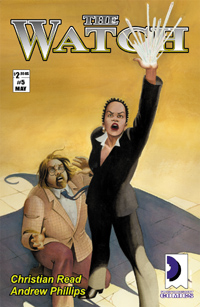 DS: How useful is the internet in the operation of Phosphorescent Comics?
DS: How useful is the internet in the operation of Phosphorescent Comics?
BH: The internet has become invaluable as a source of information, marketing, and it allows us to enjoy a much higher level of contact with our business partners and creative personnel. The internet has allowed us to overcome distance barriers and there is no problem dealing with distributors and printers overseas even though they're in completely different time zones. The internet is a vital part of our current operation, and it looks as if it will increasingly become required for various aspects of our workflow. We've just recently opened up forums at www.phosphorescent.com.au (please come visit y'all!) and we use the web every day to communicate and check on artist's progress. Without email we would have to rely more on the telephone, fax machines, and post (we tried telepathy but it isn't a reliable option). When it boils down to it the internet is just another (but probably the most exciting) option available. Even though at times computers can prove to be a source of techno fear and frustration, they are one of my first and lifelong loves. It was my desire to use them for something other than just the sake of it that led me straight to publishing in the first place. I don't think all this technology has come to realise it's full potential, but already the internet has proven invaluable for our successful day to day operation.
DS: Do you still read comics for relaxation?
BH: If you'd asked me a year ago I would have said NO, any reading of comics is in the name of market research only. I thought I'd read my last comic for enjoyment when I was sixteen, and remained for a while fairly committed to that decision. Comics had to prove to me their worth all over again. While it's true I'll probably never be able to look through a comic again without having thoughts about how it was made, and who was responsible, I've come to accept that that doesn't have to contradict my ability to enjoy them. I'm increasingly discovering comics that I can enjoy. I just read The Amazing Adventures of Cavalier and Clay, a novel by Michael Chabon, which has really opened my mind up to what I am doing. Comics can be a powerful medium for changing the world and for the self-expression all kinds of social, artistic and even political ideas that can have far-reaching effects on all kinds of levels. Consequently my current love and enjoyment of this work has soared. I'll read anything that is sent to the business via our submissions process, I'll also happily read small press stuff, stock standard Marvel and DC superheroes, stuff from Image, Vertigo, other publishers like Archangel Studios, older comics like The Savage Sword of Conan, anything really at all from publishers both big and small, and most of the time now you'll find me enjoying what I'm reading and my work.
If you have a comment or question about Small Press then feel free to contact me